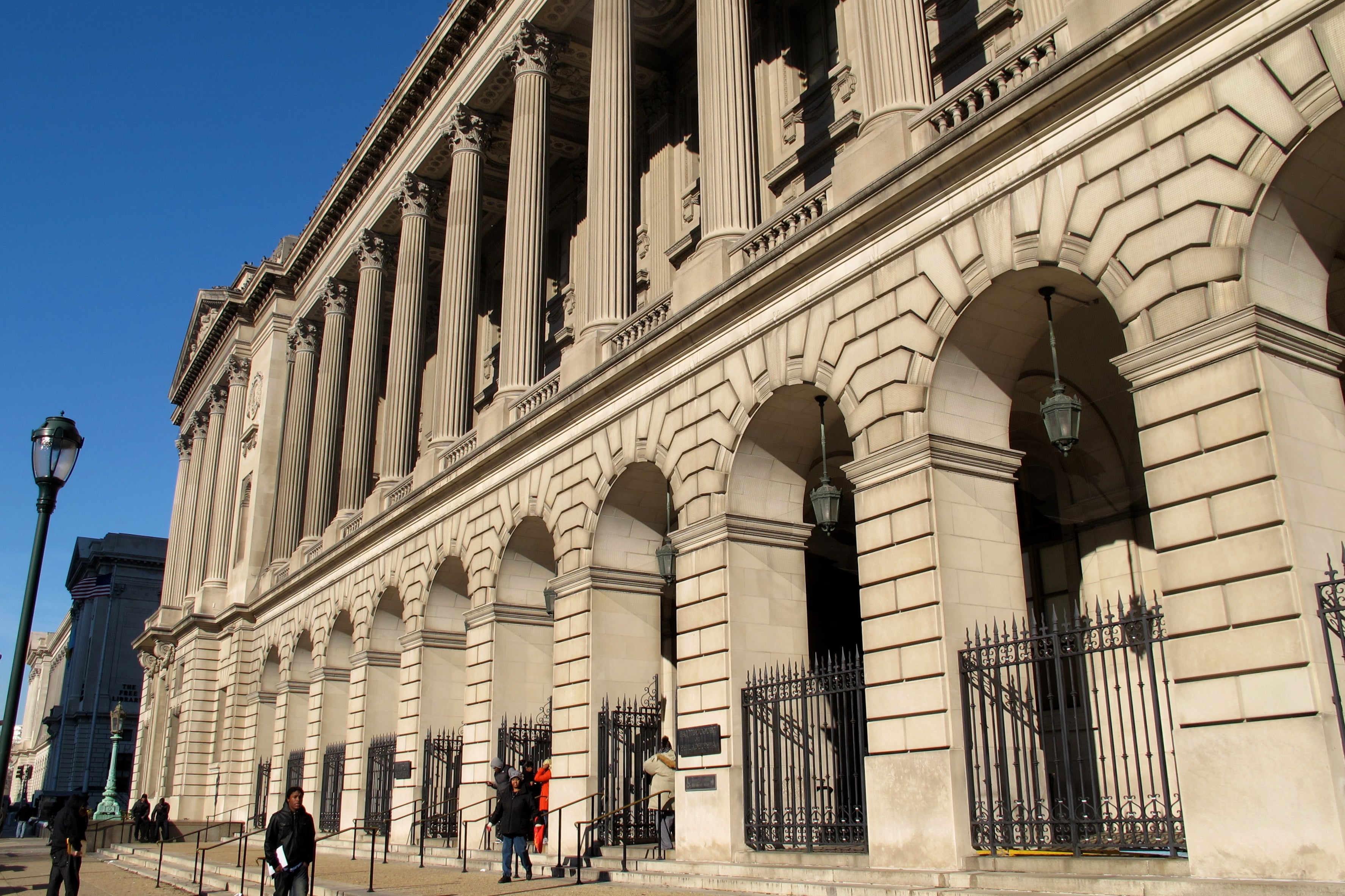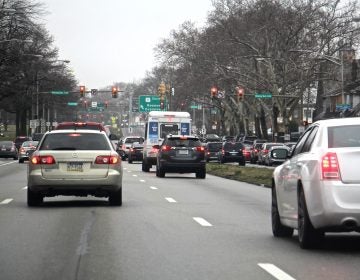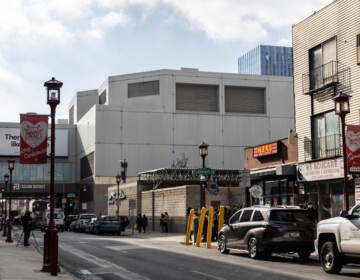DAGspace: Watch That Space


Watch That Space
by Eric Vincent
It’s safe to assume we’re not unveiling a profound observation in noting how the new Barnes Foundation on the Benjamin Franklin Parkway has “done something” for the Parkway. But it’s worth re-energizing the historical context of what that “something” is for the people of Philadelphia, not to mention officials toiling in City Hall, along with private sector blokes and blokettes who are active in our city’s cultural scene and its evolution. In that process, we could be letting the rest of the world know what a monumentally lovely thing we have going here, thus bringing our city more business (and who couldn’t use more business these days?).
The Parkway is becoming the epicenter of Philadelphia’s post-millennium evolution. In the wake of the Barnes Foundation’s arrival, another site on the Parkway has been emerging in that evolution’s crosshairs: the Family Court building at 1801 Vine Street. As design advocates, as conscientious Philadelphians, we need to watch that space, because what happens there could be transformative for the city, unless it’s not.
For the emerging importance of the Parkway, the 1801 Vine Street building is more significant than the sum of its design, capacity, and location. What happens to it when the Family Court eventually moves out of it could be, as Malcolm Gladwell might put it, a tipping point. Not only for the Parkway, but for Philadelphia’s aspirations to attain parity with the likes of Paris and New York in the pantheon of great cities. If that latter statement strikes one as hyperbolic, consider the effect the Barnes Foundation’s relocation to the Parkway has already had in closing in on that aesthetic tipping point.
A product of the City Beautiful movement of urban reform philosophy, the Benjamin Franklin Parkway was designed by French landscape architect Jacques Gréber to emulate the Champs-Élysées in Paris, a pedestrian-friendly roadway lined with cultural oases. Those noble aspirations were interrupted by the Great Depression, leading in subsequent decades to the installation of institutions on the Parkway which were antithetical to its original Champs-Élysées-inspired aesthetic.
The 2000 block of the Parkway, now occupied by the Barnes Foundation, is a case in point. The fact that the restoration of the Merion galleries has been so brilliantly executed has somewhat obscured the effect it has had on the Parkway at large: the Barnes replaced a children’s prison the Juvenile Justice Center. As such, the Barnes has lent the Parkway a panache it hasn’t known before, as much because of what it displaced, as for what it replaced it with. It wasn’t merely an addition to the Parkway, but a total transformation of a key section of it, the place where Logan Square is linked to the Rodin Museum, Eakins Oval, and the Philadelphia Museum of Art.
Now, turn your gaze away from the Barnes, and look in the other direction, at that other lost corner of Logan Square, 1801 Vine Street, and freeze. If you’ve ever been to the Place de la Concorde, the large public square which anchors the east end of the Champs-Élysées, you can be excused for being gripped with déjà vu. That’s because those massive twins you’re now looking at, with their dual triangle pediments flanking colonnaded stone facades, are replicas of the twin palaces walling off the north side of the Place de la Concorde, where the building on your right houses the French Naval Ministry (Family Court on Logan Square), and the one on the left, the Hôtel de Crillon (Free Library central branch here). A hotel, you say? Ah! You might say. A hotel in that lovely old Family Court building! Isn’t that a divine idea!
It’s been thought of. On May 21, 2010, then Governor Rendell and Mayor Nutter held a press conference proposing just that, a redevelopment of the 250,000 square foot space. State money was allocated. Bids were solicited from development partners for a mixed-use proposal incorporating hotel, retail, and museum space. The project was a failure. Due to haste, there was significant negligence in property assessment: the building’s measurements, engineering integrity, and the historic preservation requirements – oh, that’s right, a hotel operator can’t just start cutting through the walls of a building which holds a historic designation, at least not in Philadelphia. Only one bid was offered. The city passed on it.
It didn’t help that, concurrently, a legal train wreck was in progress over the development of the new family court building at Fifteenth and Vine streets, throwing any prospect of projecting timelines or deadlines for any of this business into a black hole. Nothing scares away developers quite like uncertainty over what they’re getting into, or when.
But that was two years ago. Although the involved parties are still jousting in deposition, some of the smoke has since cleared at Fifteenth and Vine. It looks like the new family court building is actually going to get built, and open for business one day. And, as Ashley Hahn reported back in December 2011 on her “Eyes on the Street” blog at Plan Philly, the Philadelphia Industrial Development Corporation finally began a comprehensive assessment of the grand palace at 1801 Vine Street. Around the same time, Suzette Parmley reported in the Philadelphia Inquirer that City Hall was indeed planning to solicit proposals for developing a hotel at 1801 Vine.
Is that a good idea? The Parisians brought it off just fine on the Place de la Concorde with the Hôtel de Crillon, so why shouldn’t it work on Logan Square? It would be one less depressingly dreary institution on the Parkway, replaced by one more jovially classy one. It would be one more place on the Parkway where one could sit, mingle, have a cocktail (no alcohol served in Family Court, teetotalers). It would, slightly less than a whole century later, finally close the circle on Jacques Gréber’s original design aesthetic for the Parkway. With a swanky hotel at 1801 Vine, the entire north flank of the Parkway, from the newly redeveloped Sister Cities Park across Eighteenth Street from the Cathedral Basilica of Saints Peter and Paul, all the way up to the Art Museum, would be one, long, perfectly smashing affair. Perfecting the vibe of the Parkway as such, would likewise elevate the vibe of the whole city. Right?
Right. Unless they screw it up.
These things are All. In. The. Implementation. I know, we don’t like to think the city would screw something like this up. But go step outside, and take another look at that salmon-colored monstrosity that is the Ten Rittenhouse Square tower, and ask yourself, How could that happen? How could they do such a thing? What were they thinking? On tony Rittenhouse Square, of all places? Really? Wasn’t its equally garish brother at the corner of Pine Street on the Avenue of the Arts enough of an insult to our prideful city? Didn’t they learn anything from that? And how do they live with themselves?
Sorry people, I’ve gone slightly over 1000 words. Just remember, 1801 Vine Street: Watch that space.
———
Eric Vincent is a resident of Philadelphia’s Museum District. eric@pyramider.net

DAGspace is a monthly opinion column written by members of the Design Advocacy Group (DAG), with the goal of promoting good design by encouraging thoughtful public discussion of design matters. The mission of the Design Advocacy Group is to provide an independent and informed public voice for design quality in the architecture and physical planning of the Philadelphia region.
The next DAG meeting is this Thursday, August 2 at 8am sharp, at the Center for Architecture (1218 Arch Street). Kevin Smith, Partner in Charge at Robert A.M. Stern Architects, along with members of the staff of the Museum of the American Revolution will be on hand to present and discuss their proposed building near Independence Hall.
In addition to appearing on DAG’s website, you’ll be able to read DAGspace on Eyes on the Street. You can read previous DAGSpace articles here.
WHYY is your source for fact-based, in-depth journalism and information. As a nonprofit organization, we rely on financial support from readers like you. Please give today.







